Tunnels & Trolls is almost as old as D&D (it was released in 1975 – that was the year I was born) and surprisingly enough the latest version is almost unchanged from the game Ken St. Andre designed over 30 years ago. I have to admit I was almost totally oblivious of its existence (aside from seeing some ads in gaming magazines in the early 1990s) until I recently started to get interested in old-school gaming. After reading a review by Berin Kinsman, I decided I had to check T&T out.
Last week I finally got my copy of the Tunnels & Trolls v7.5 Boxed Set by Fiery Dragon Productions. At first I was a bit disappointed because for some reason I expected a much bigger box. But when I opened it, I was more than happy. Although the box (and the books) are smaller than the usual Letter-sized boxes (and books), it’s full of old-school goodness.
As you can see, aside from a rulebook, the box contains two adventures (one solo adventure and one GM-based one), several monster and spellbooks, a full-color poster map of the Trollworld, player and monster tokens, a set of character sheets and even four six-sided dice. That’s a lot of bang for the buck if you ask me. Just throw in some scrap paper and a couple of pencils and you have everything you need to play in a handy box!
The rules of T&T look a lot like OD&D on the surface, but on a second look you notice that D&D and T&T are quite different. Tunnels & Trolls uses the attributes Strength, Constitution, Dexterity, Speed, Intelligence, Wizardry, Luck, and Charisma. During character creation you roll 3d6 for each attribute. That sounds pretty familiar but when you roll triples, you are allowed to roll again and add the new roll result. So it’s possible that characters start with very high attribute values.
After creating your basic attributes you get to choose your race (called Kin or Kindred in T&T). The racial modifiers in T&T are not added or substracted from your basic attributes but are multipliers. When you play a dwarf for example, you start with STR x 2, CON x 2, DEX x 1, LK x 0.67 and so on.
T&T also has character levels, but they work differently from D&D’s levels. In T&T a character’s level is directly linked to his attributes. Each class (we’ll talk about classes later) has a list of “Level Attributes”. For a Citizen these attributes are STR, CON, LK, CHR. You now take the highest of these attributes and compare it to a table to find out what level the character is. If STR is the character’s highest attribute and it’s in the 1-9 range, he’s considered a level 0 Citizen. When STR is in the 10-19 range, he’s level 1 and so on. In T&T the character level is not a measure of a character’s experience!
T&T has six classes: Citizen (you are basically an average Joe), Rogue (a mixture between a thief and a minor spellcaster), Warrior (you are good at hurting others), Wizards (your average spell-caster), the Specialist (someone with special abilities like a Specialist Mage, Ranger or Leader) and the Paragon (who’s good at anything he does including fighting and magic). Each class can use different weapons and armor and has access to certain talents. Each Rogue start with the Thievery talent for example.
Talents are an interesting concept for an old-school game like T&T. Aside from a few talents like Thievery there’s no list of talents. Instead the players and the GM are encouraged to make up their own talents. Talents are what defines a character, what he or she is exceptionally good at. This may be something like Swordplay, Healing, Gambling, whatever suits your character concept. Each character gets a new talent everytime he levels up. Talents are always linked to an attribute (like Thievery is linked to DEX) and they grant a bonus of 1D6 (the talents bonus is determined when you pick it) to any appropriate Saving Rolls.
Saving Rolls are the basic mechanic of T&T. Aside from combat rolls everything is solved by making Saving Rolls. At first the GM decides on the difficulty level of the roll. Then the character rolls the dice (usually 2d6) adds the relevant attribute and if appropriate the bonus granted by one of his talents. The result must then be equal or higher than a given number determined by the difficulty level. That number is 10 for a 1st level SR, 20 for a 2nd level SR and so on.
Combat works not that way. T&T’s combat is actually much, much different from any other game I’ve read and played so far. There are no individual to-hit rolls, no individual damage rolls, not even indiviual damage. Each character rolls his weapon damage and adds his “combat adds” (The combat adds are calculated from STR, DEX, SPD and LK. For each point over 12 in any of these attributes you get 1 point of adds). The results of all characters of one side are then added and compared to the results of the other side in the conflict. The higher result wins and the difference between the two results is the damage that’s dealt to the whole group. The GM usually decides how the damage is distributed. Armor reduces the damage each character gets. That may be a bit unconventional but it makes mass combat, much, much faster than in any other game I’ve seen so far.
T&T’s magic system is a simple mana points system. Wizards (and other characters) may cast the spells they know as often as they wish, until their WIZ is depleted. The higher your character’s intelligence is, the more spells you can remember. A high WIZ rating also serves as some magic protection. You can’t cast spells against someone with a higher current WIZ rating. But if your opponent already depleted a lot of his WIZ, this becomes a totally different story. The box contains countless spells which have such colorful names like “Take That You Fiend!” or “Oh There It Is”. If you want a more serious tone in your games, you’ll probably have to come up with some spell names of your own.
Monsters are basically described by their Monster Rating and sometimes some special abilities. The MR is not only equal to the hits they can take before going down, it’s also a measure for the damage they can cause. Take the MR, divide it by 10, round down and add 1 and you’ve got the number of D6 you’ve got to roll to determine the damage caused by the monster. A monsters combat add is equal to half its MR. It’s as easy as that. And when you’ve killed the monster the party gets a number of Adventure Points equal to its MR.
There’s much more I could tell you about T&T. Its list of weapons and armor is quite impressive and without the extensive glossary I would have felt pretty much lost several times. Or do you know what kind of weapon a Jambiya, a Misericorde or a Manople is? The core rule book also contains a history of the Trollworld, And with all the other stuff in the box you probably have enough material to run T&T for years.
As you’ve probably noticed, I enjoyed reading T&T very much, and I am quite happy I bought a copy of the boxed set, but there are a few things I didn’t like: the layout of the books may be pretty clean for the most part, but sometimes the font size gets so small it borders on being undecipherable. The rules are sometimes organized in a very peculiar way, that makes looking up things a real adventure. But if that doesn’t scare you away, you are in for a real treat, especially if you have a soft spot for old-school games.

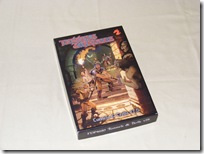
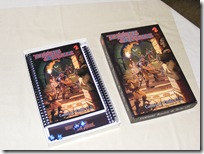
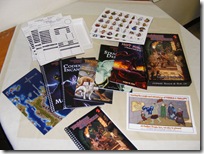
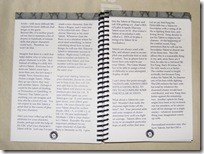
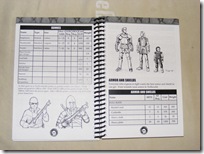
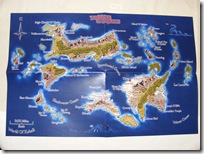
Thanks for the great review. You got almost everything right, except that Level 1 saving rolls have a target number of 20. That is, you roll 2D6, add that to your attribute being tested, and if you equalled 20 or greater, you made the saving roll. Level 2 is 25, level 3 is 30 and so forth.
By the way, people can follow me on twitter as trollgodfather, and visit my site at trollhalla.com if they'd like to join the best t & t gamers in the world.
You're welcome! Actually I have to thank you for T&T! And sorry about getting the SR difficulty numbers wrong. For some odd reason I thought it was 10, 20, 30, etc. But you are of course right.
And thanks for pointing out your Twitter username and Trollhalla to us.
Great review! Now I want to get my hands on a shiny new box of T&T.
Hell… what more can a review achive? 😉
.-= Cyric´s last blog ..Das 3. Warhammer 40K RPG steht fest =-.
So, how much changed since the 1979 version which I enjoyed much at the time?
I recently retro-reviewed that one on:
http://www.darkdungeon2.com/2010/10/classic-revie…
Greets, Jaap